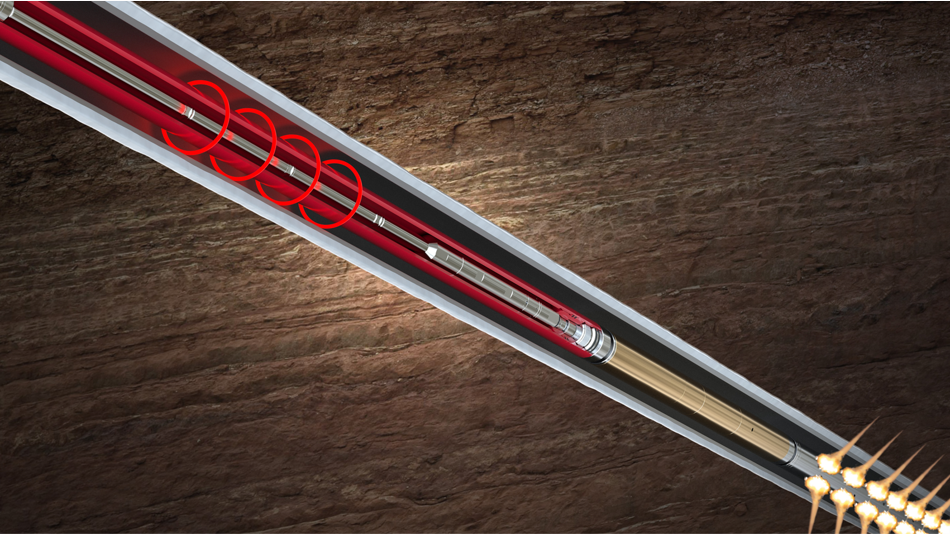 Search
Search
 Search
Search

Operator set a goal to evaluate formation to improve well performance with new perforating technology
Download PDFMature Fields

Improve performance of existing well in older, low-pressure formation

Existing Well

Evaluate and perforate the well, using the following Halliburton technology:
In an existing well in a land formation in Ecuador, an operator set a goal to evaluate the formation, with plans to improve well performance by perforating the formation with the desired underbalance pressure and evaluating well production after this process. The operator sought a faster and more cost-efficient alternative to running coiled tubing and displacing the well with nitrogen. Halliburton Testing and Subsea presented the WiFire™ acoustic firing head, enabled by the DynaLink® telemetry system. Used in tandem with a jet pump, well perforation with the desired underbalanced pressure was achieved, and the reservoir evaluation was completed.
The operator set out to evaluate this older formation to determine options for increasing production at the lowest cost possible. The existing production well did not have the pressure to bring the hydrocarbon to surface. To improve the production flow of hydrocarbon, the operator’s goal was to decrease resistance to flow by reducing the hydrostatic pressure in the wellbore – perforating the formation intervals of interest at 1,500-psi underbalanced pressure with tubing-conveyed perforation (TCP). The operator originally planned to implement the traditional underbalanced TCP method of using hydraulic firing heads and a coiled tubing unit with nitrogen. This traditional coiled tubing method involves nitrogen pumped downhole, using coiled tubing and displaced to the string up to the activation pressure set on the hydraulic firing head. The pressure in the string is then bled off on the surface to allow for the desired underbalanced pressure required to the formation, before the perforation guns are detonated. This presented several challenges of time and costs, as it would require extra equipment and personnel on the rig, and additional rig-up and rig-down time for the coiled tubing and nitrogen equipment. An additional challenge was the difficulty in achieving the desired underbalance due to low formation pressure, compared to the density of the fluid plus the nitrogen remaining in the string. There was also a need to access real-time reservoir data crucial for adjusting the drillstem testing (DST) program to ensure that objectives were efficiently met when evaluating the formation.
Since the operator’s goal was to reduce resistance to flow in the reservoir by reducing the hydrostatic pressure in the wellbore, the next step was to reperforate the well to create a clearer channel from the reservoir to the surface. Halliburton presented to the operator a compelling solution to reperforate the well, offering the ability to provide a full suite of equipment and technologies, with field personnel skills and reservoir focus. After the operator learned of the WiFire™ acoustic firing head and DynaLink® telemetry system capabilities, it elected to alter its well testing plan to implement this new solution to achieve successful perforation at a cost lower than coiled tubing. The WiFire acoustic firing head, enabled by the DynaLink telemetry system, gave the operator total control over perforation, along with access to real-time reservoir data.
By successfully deploying the first field usage of the WiFire acoustic firing head, enabled by the DynaLink telemetry system, the operator gained significant savings on third-party costs and rig time, achieved the objective of perforating the formation with the desired underbalanced pressure, and successfully evaluated the formation. The operator’s success in evaluating the formation paved the way for future plans to increase well production.
